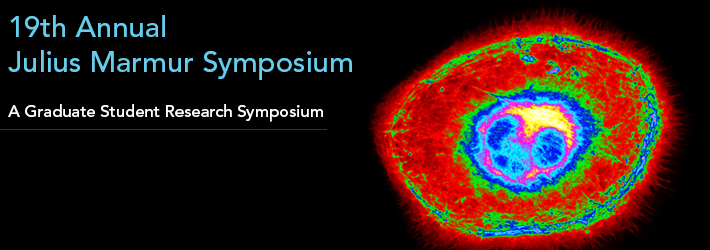
Schedule of Events
Monday, March 23, 2015
- 9:30 am - Breakfast Reception 3rd Floor Lecture Hall, Forchheimer Bldg.
- 10:00 am - 12:00 pm - Student Presentations & Awards Ceremony, 3rd Floor Lecture Hall, Forchheimer Bldg.
- 2:30 pm – 4:30 pm - Poster Session and Reception, Lubin Dining Hall
2015 Awardees

Rachel Fremont
The role of the cerebellum and cerebello-basal ganglia interactions in dystonia
Mentor: Dr. Kamran Khodakhah (Dominick P. Purpura Department of Neuroscience)
Dystonia is a devastating movement disorder that remains poorly understood. One inherited dystonia, Rapid Onset Dystonia-Parkinsonism (RDP), is associated with loss-of-function mutations in the α3 isoform of the sodium-potassium ATPase (sodium pump). Recently, a pharmacologic rodent model of RDP was generated that faithfully recapitulated the disorder. The model demonstrated that partially blocking sodium pumps in the cerebellum was necessary and sufficient to induce dystonia. We find that partially blocking sodium pumps in the cerebellum results in abnormal burst firing of the neurons in this brain region. Further, aberrant cerebellar output in these animals alters basal ganglia activity. Disrupting a direct cerebello-basal ganglia pathway alleviates dystonia, suggesting that symptoms in this model result from the cerebellum driving abnormal basal ganglia activity. Building on the success of the pharmacologic model, we next tested whether acute loss of the α3 isoform of the sodium pump alone in different brain regions could recapitulate aspects of RDP. To do this, shRNA was used to knockdown the causative protein. We found that knockdown in the substantia nigra resulted in Parkinsonism while knockdown in the cerebellum caused dystonia. We then examined whether the cerebellum could contribute to symptoms in other hereditary dystonias. Loss-of-function mutations in Torsin A are thought to be responsible for the most common form of inherited dystonia. We found that knockdown of Torsin A in the cerebellum of adult rodents resulted in dystonic symptoms. Our findings suggest that the cerebellum likely contributes to symptoms in some inherited dystonias.

Jaime L. Schneider
Consequences of selective blockage of chaperone-mediated autophagy in vivo
Mentor: Dr. Ana Maria Cuervo (Department of Developmental and Molecular Biology)
Chaperone-Mediated Autophagy (CMA) degrades a select pool of cytosolic proteins in lysosomes, contributing to protein quality control. Our group previously found that CMA activity decreases with age and that its restoration in old mice preserves proteostasis, increases stress resistance, and improves organ function. However, the physiological functions of CMA in vivo and the basis for the beneficial effects of CMA rescue remain unknown.
In this study, we developed conditional knockout mice for LAMP-2A, the CMA limiting component, to selectively block CMA in a tissue-specific or time-dependent manner. We found that liver-specific blockage of CMA disrupts hepatic metabolism and alters the whole-body energetic balance. Comparative lysosomal proteomics revealed that key enzymes in carbohydrate and lipid metabolism are normally degraded by CMA and that impairment of this regulated degradation contributes to the metabolic abnormalities observed in CMA-defective mice.
Analysis of other proteolytic pathways revealed an increase in macroautophagy (MA) and changes in the ubiquitin-proteasome system (UPS) that compensate for CMA failure. To further investigate the molecular basis of this cross-talk in vivo and whether these compensatory mechanisms are sustained with age in a tissue-specific manner, we developed a temporally-inducible LAMP-2A KO mouse model. Our findings support that whereas CMA blockage early in life results in upregulation of MA, old mice lacking CMA exhibit an age-related failure of MA and UPS that explains the decline in proteostasis and enhanced susceptibility to oxidative stress. We also identified tissue-specific differences in the compensatory response whereby certain organs display robust MA compensation for CMA loss when animals are young, but lack of compensation when aged.
Collectively, our studies uncovered a novel physiologic role of CMA in vivo and enhanced our understanding of the organismal response to failure of this pathway with age and in disease.

Thomas J. Younts
Presynaptic forms of long-term plasticity in the mammalian hippocampus
Mentor: Dr. Pablo Castillo (Dominick P. Purpura Department of Neuroscience)
Long-term potentiation (LTP) and depression (LTD) are activity-dependent changes in excitatory and inhibitory synapse strength that contribute to learning and memory formation. Over decades of research, many postsynaptically-expressed forms of LTP and LTD have been characterized. In contrast, relatively little has been uncovered about presynaptically-expressed plasticity, particularly at inhibitory synapses. To help close this knowledge gap, I studied synaptic function in the hippocampus using electrophysiology combined with selective pharmacological, genetic, and behavioral manipulations. I uncovered a novel and physiological way to trigger a form of inhibitory endocannabinoid-mediated plasticity (eCB)-LTD, which regulates how excitatory information flows through single neurons. This work is especially significant because it clarifies how presynaptic inputs can be adjusted solely by postsynaptic activity. In addition, I made the surprising and controversial discovery that eCB-LTD requires presynaptic protein synthesis, which will contribute to dispelling a 50 year dogma that translation does not occur in presynaptic compartments in the mature mammalian brain. Moreover, in collaboration with the 2013 Nobel Laureate Thomas Südhof, I explored how two synaptic vesicle-associated proteins, with hitherto no known function in the brain, contribute to long-term plasticity. I helped establish synaptotagmin-12 as a protein kinase-A (PKA) target critical for classical mossy-fiber LTP, and Rab3B as essential for eCB-LTD and hippocampal-dependent forms of learning and memory. Collectively, my work has provided new mechanistic understandings of presynaptic function that further support their role in learning and memory and will inform future studies exploring how synapses function in health and disease.
More information about the Marmur Symposium
Photos from the 2015 Julius Marmur Symposium











